|
31st March
Doonfoot ( Map)
It was “best in the west” as far as the weather was concerned. I chose to visit Doonfoot, (Website)
a suburb of Ayr. We travelled down the M77, stopping off for breakfast
at Kilmarnock Asda (good meal, but cold bacon and stodgy beans: 8/10)
before travelling through Burns’ old hometown of Alloway and
across Dunure Road to the Castle Walk car park close to the footbridge
at the mouth of the River Doon. There was hardly a cloud in the sky as
we started our walk. Immediately we got great shots of a pair of
Starlings on one of the Hawthorn bushes on the grassy sandbank that
separates the car park from a pond. Initially we were disappointed to
find the pond deserted, however a bonny wee drake Teal flew in (also see
“Pictures of the Week”, below), before being spooked by
rampaging dogs and there careless walkers. I took a couple of shots of
similar flowers - a Coltsfoot and a Dandelion . At first glance these look the same but on closer inspection they are quite different.
| Starling |
Drake Teal |
Coltsfoot |
Dandelion |
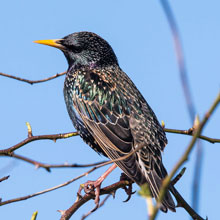 |
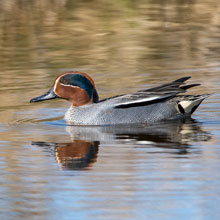 |
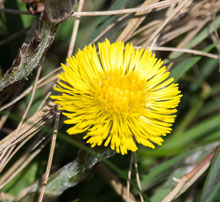 |
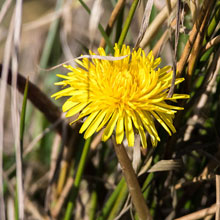 |
We walked out along the river mouth towards the sea. I spotted a group
of Turnstones on the opposite bank beside a preening Mute Swan. We next
came across a solitary Greenshank sitting near some Oystercatchers.
There were quite a few dog walkers taking advantage of the nice
weather, but who, unconsciously or otherwise, disturbed the birds we
were trying to photograph.
| Turnstone |
Mute Swan |
Greenshank |
Oystercatcher |
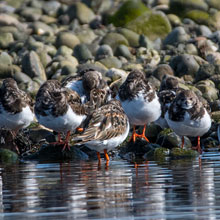 |
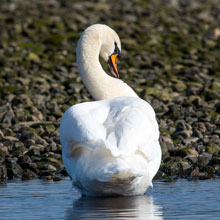 |
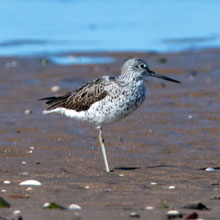 |
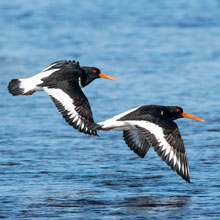 |
The view from Doonfoot of the seafront at Ayr:
A small aeroplane passed overhead, a Druine Turbulent ,
which appears to be a home-built kit plane. I noticed the Greenshank on
a sandbank feeding further out with a large gathering of Gulls and
Redshanks in the mouth of the river. As we returned to the car I
managed a few shots of a foraging Rook, including a nice flight shot
(see “Pictures of the Week”, below), but we saw little
else. At the grassy bank by the car a patch of Daffoldils could just be
seen peeking through the grass.
We moved half a mile to the Greenan Shore car park. On leaving the car
John pointed out a shrub with striking pink flowers midst the Hawthorns.
I later identified it as a Flowering Currant, Ribes Sanguineum . I photographed a flowering Red Campion as we walked south along the low dunes towards Greenan Castle .
John and I were pleased to see our first butterfly of the Spring, a
Peacock. I snapped it as it warmed its wings before the strong
sunshine.
| Flowering Currant |
Red Campion |
Greenan Castle |
Peacock Butterfly |
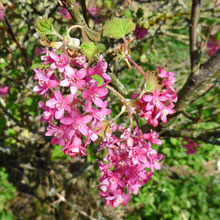 |
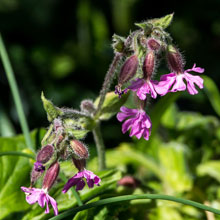 |
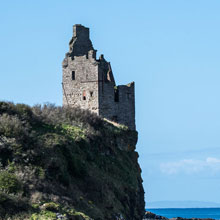 |
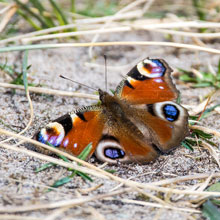 |
We paused below the north side of the crags in order to check for
Yellowhammers, as we had seen them there in previous years. Sadly we
didn’t see any, but I did notice a quartet of interesting plants
on the short grass. A 5cm fertile (spore producing) stem of Field Horsetail
sat precariously on the very short grass. The stem grows from
underground rhizomes. Later in the year sterile stems will grow. Close
by I noticed several patches of a plant with 2mm wide white flowers. A newby for us, these were Common Whitlowgrass, a member of the Cabbage family.
These were very pretty when seen magnified (see “Pictures of the
Week”, below). Below the thorny bushes that lined the rough path
I saw some bright yellow flowers of Lesser Celandine .
Interestingly it used to be used as a cure for piles and was called
Pilewort. There were many very familiar, and consequently overlooked,
flowers of the Common Daisy . John and I resisted the temptation to sit and make daisy chains and moved on.
| Field Horsetail |
Common Whitlowgrass |
Lesser Celandine |
Common Daisy |
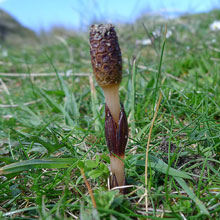 |
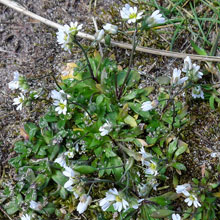 |
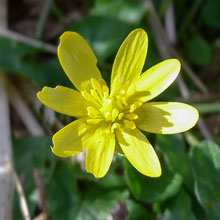 |
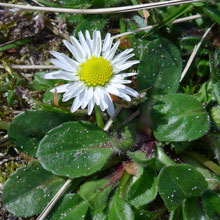 |
On the shaded slopes below the Castle I noticed that several more wildflowers were widespread. Few-flowered Leek,
an invasive non-native plant, sat in the damp patches at the base of
the cliff, while half way up the steep slope were extensive patches of Opposite-leaved Golden Saxifrage, whose flowers have no petals. Another often overlooked flower is that of Dog’s Mercury (since they are not brightly coloured. It should be avoided
though, because it is poisonous if eaten). Looking rather out of place
half way up the slopes of bare rocks I noticed an outcrop of Primrose . It is interesting to wonder how it got up there (My guess is that it was the birds).
| Few - flowered Leek |
Opposite - leaved Golden Saxifrage |
Dog's Mercury |
Primrose |
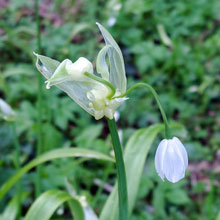 |
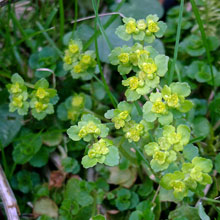 |
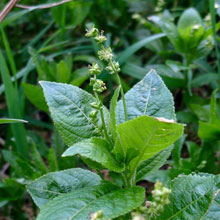 |
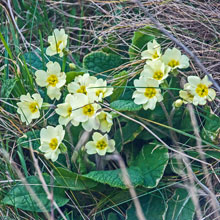 |
Even further up the rocks there was a large Scurvygrass plant. On the
south side of the Castle a rough path leads up to the Castle. As we
briefly paused on our way up we startled a cock Pheasant. I managed a
couple of shots as it scurried into the long grass. When we reached the Castle, we missed a Blue Tit and a pair of Long-tailed Tits but we decided to investigate
the edges of the fields to the east of the Castle. Immediately we
heard, for the first time this year, the familiar call of the Chiffchaff.
I snapped a couple of shots of it sitting in the gloom on top of a
distant bush before it flew to the opposite side of the field.The north
boundary was edged with Hawthorn bushes that were in all in bloom.
| Scurvygrass |
Pheasant |
Chiffchaff |
Common Hawthorn |
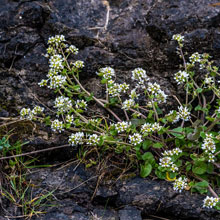 |
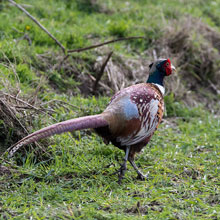 |
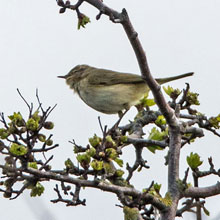 |
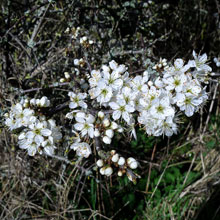 |
The sky had become totally overcast so the light had badly
deteriorated. We walked along the sides of the fields to the east of the
castle as that area often yields some interesting finds. Our first
was a Buff-tailed Bumblebee (see “Pictures of the Week”,
below) resting on a large leaf. Near it I spotted some Common Field Speedwell, appropriately enough, at the edge of the
field. Also there was a couple of plants of Red Deadnettle , a
flower that used to be called the “Bumblebee Flower” and,
incidentally, unlike its relative, the stinging nettle, it has no
sting. Further along the field’s edge, under the bushes, I
discovered some pretty, violet-flowered Ground Ivy . This plant
is actually another member of the Deadnettle family. I also saw another
common wildflower seen in fields, Common Chickweed. As its name suggests
it was once used as chicken feed.
| Common Field Speedwell |
Red Deadnettle |
Ground Ivy |
Common Chickweed |
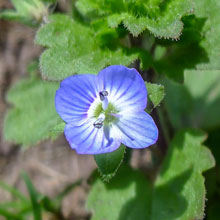 |
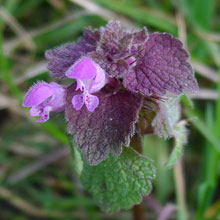 |
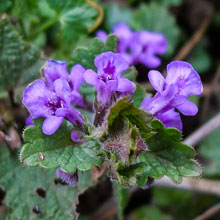 |
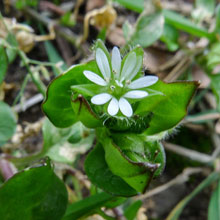 |
.
We left the fields and scrambled down a bank onto a road that allowed us
access to the grassy common adjacent to the car park. At the start of
that area I came across some Germander Speedwell. As we had a
bit more time, I had a quick scan on the beach behind the car park. I
managed to put up a Curlew as I sidled towards it but some Redshanks
were less flighty. I also disturbed a large Herring Gull which took
flight as I passed and protested loudly as it flew off.
| Germander Speedwell |
Curlew |
Redshank |
Herring Gull |
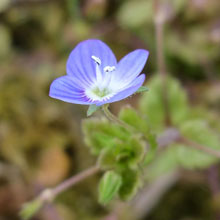 |
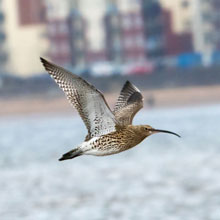 |
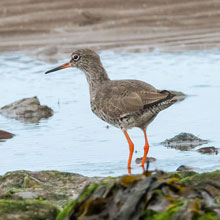 |
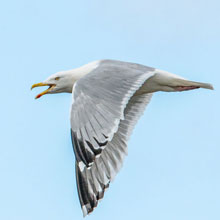 |
It had been a visit rich in wildflowers. Spring has certainly sprung. We
had some nice bird sightings at the start of the trip at the mouth of
the River Doon, but around Greenan Castle most of the birds managed to
avoid us. We concluded, as usual, with tea and pineapple topped cream
pastries. A tasty way to end the day.
Pictures of the Week:
| Teal |
Rook |
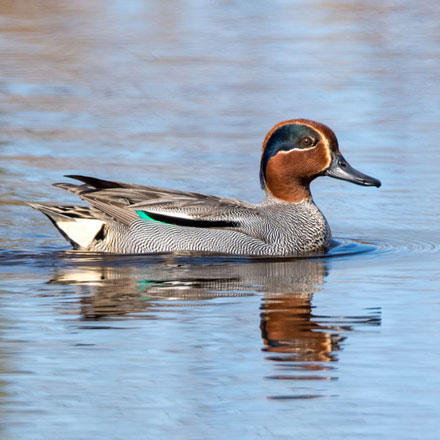 |
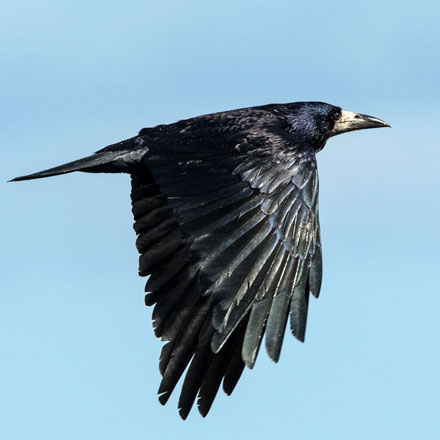 |
| Common Whitlowgrass |
Buff - tailed Bumblebee |
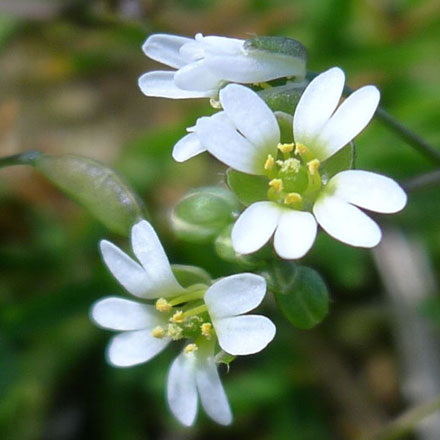 |
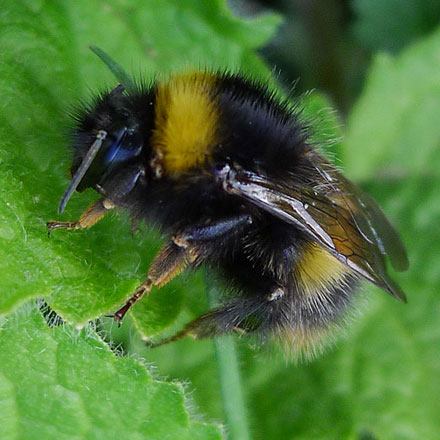 |
24th March 2019:
Musselburgh
The best of the weather was to be in the east, so we headed for our old
faithful destination, a site that seldom lets us down, Musselburgh.
After a good, but not perfect breakfast in Dalkeith Morrisons (cold
tomatoes, overdone links, slow service, 8/10), we started our quest at
the Millhill car park beside the River Esk, about 1/2 mile from where
the river flows into the Firth of Forth. It is popular with people who
like to feed birds that gather there. I started our collection of shots
with an attractive Feral Pigeon followed by a trio of Goldeneye
- an adult drake, a juvenile drake and a female. I also got a close-up
shot of a fine drake Mallard (see also “Pictures of the
Week”, below).
| Feral Pigeon |
Drake Goldeneye |
Juvenile Male Goldeneye |
Female Goldeneye |
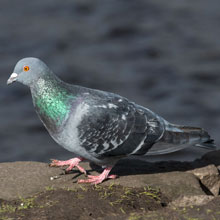 |
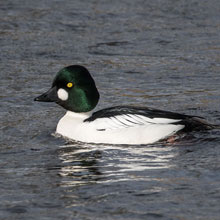 |
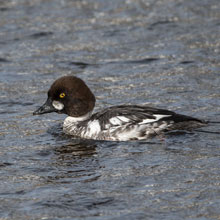 |
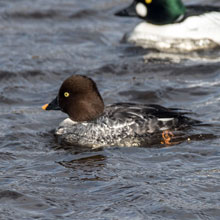 |
Of course there were gulls-a-plenty. I snapped another trio, this time
of Herring Gulls - 1st and 2nd year immature and an adult.
I
next caught a photo of a beautiful drake Goosander as it washed
midstream (see also “Pictures of the Week”, below).
| 1st Cycle Herring Gull |
2nd Cycle Herring Gull |
Herring Gull |
Drake Goosander |
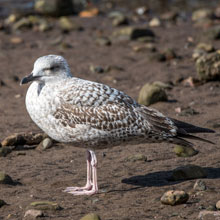 |
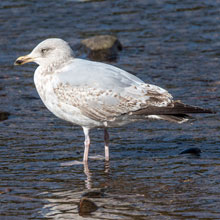 |
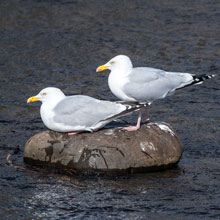 |
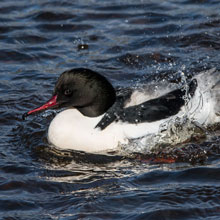 |
A few Greylags were amongst the many birds present. The one shown below
was loitering on the slipway with some of the many Mute Swans. On the
island, a Moorhen was carefully picking its way down to the water.
| Greylag Goose |
Mute Swan |
Moorhen |
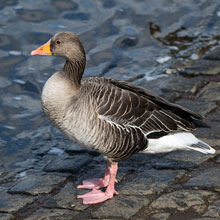 |
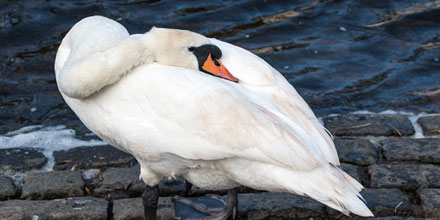 |
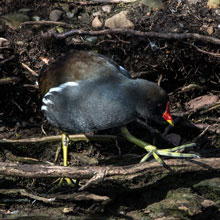 |
We decided to walk further upstream and maybe see a Dipper. There were
lots of Black-headed and Lesser Black-backed Gulls there, and a few
restless Pied Wagtails . I also captured an image of a Grey Wagtail busy on the opposite bank.
| Black - headed Gull |
Lesser Black - backed Gull |
Pied Wagtail |
Grey Wagtail |
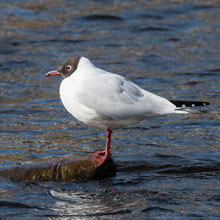 |
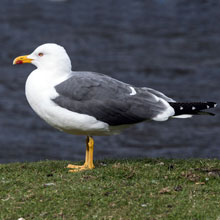 |
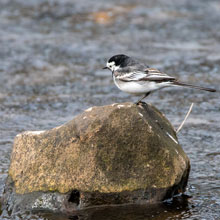 |
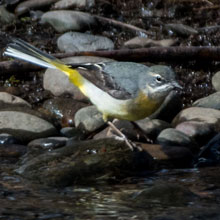 |
John had a wee seat by the Old Bridge (often called the Roman Bridge ) while I investigated the twittering of a Goldfinch in a tree close to the recently-installed Archer statue .
I didn’t manage to see the Goldfinch but I found Gorse bushes
below the bridge and also some nice blue flowers, probably Aubretia
Deltoidia, growing wild in an otherwise empty Council flower bed. What
I’ve failed to mention is that there were a significant number of Canada Geese
on that stretch of the river. They were very lively, probably due to
all the courting that was going on (see also “Pictures of the
Week”, below). I took some shots of a female Goosander on an
island, preening in the sun ((see “Pictures of the Week”,
below). After studying an interesting information board that detailed
how the Council was dealing with the threat of flooding , we decided to move to the mouth of the river.
| Archer Statue |
Gorse |
Aubrieta |
Canada Goose |
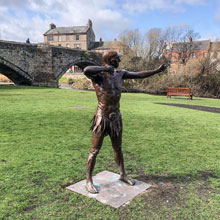 |
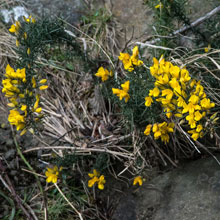 |
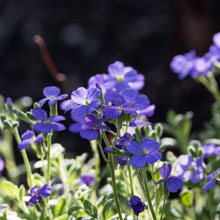 |
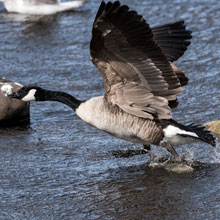 |
We parked at the Cadet Hall and walked towards the rough coastal path
to where the sea met the sea wall. As we passed the Hall a large
Carrion Crow flew in with an apple core (see “Pictures of the
Week”, below). Maybe it was a vegetarian. Nearby, I was pleased
to see some Common Scurvygrass and some early flowering White Deadnettle .
By the Hall, on the near-bank of the river, a Curlew was lazily
creeping along the edge of the river searching for invertebrates. A
small flock of Turnstones flew in, probably displaced from rocks by the
advancing tide.
| Common Scurvygrass |
White Deadnettle |
Curlew |
Turnstone |
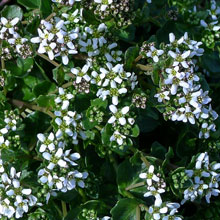 |
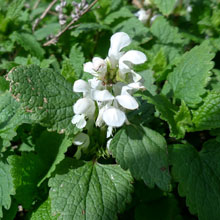 |
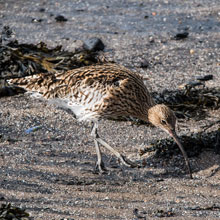 |
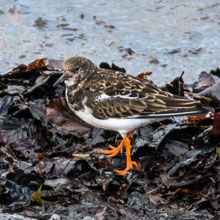 |
Slightly disappointed by the lack of birds to photograph we returned to the car and drove to the Musselburgh Lagoons ,commonly known as “the Scrapes”. The picture below was taken from the north-most hide. There are plans to further develop other lagoons in the area to create even more bird havens.
We got a photo of our first invertebrate sighting of the Spring, a
wandering White-tailed Bumblebee. It meandered past the front of the
hide. A pair of Shelducks were dabbling in the centre of the scrape
unconcerned by a small flock of Turnstones that flew in from the sea and
circled low over the waters. I also noticed a pair of wood pigeons
feeding near the water’s edge.
| White - tailed Bumblebee |
Shelduck |
Turnstones |
Wood Pigeon |
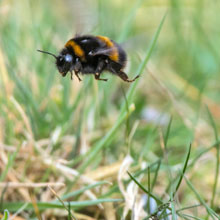 |
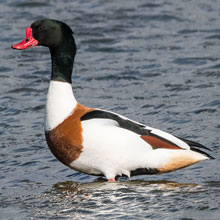 |
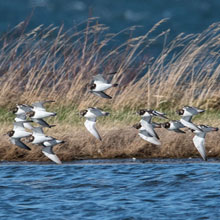 |
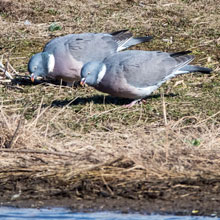 |
After a period where they all had their heads tucked under their wings,
the large flock of Bar-tailed Godwits suddenly became active. They
started feeding before taking off and landing at the opposite side of
the pool. The mass of over 200 Oystercatchers weren’t for moving
though. Only a few at the edge of the flock occasionally shuffled about.
My final shots of the day were of a pair of Teal dabbling fairly close
to the hide (see also “Pictures of the Week”, below).
It had been another satisfying day at Musselburgh. We had seen and
photographed a wide variety of birds, most at close quarters. Before
the drive back west we sipped tea and demolished Danish Apple Lattice
pastries as we sat behind the car on our 3-legged stools, sheltering
from the stiff breeze. Lovely!
Pictures of the Week:
| Drake Mallard |
Drake Goosander |
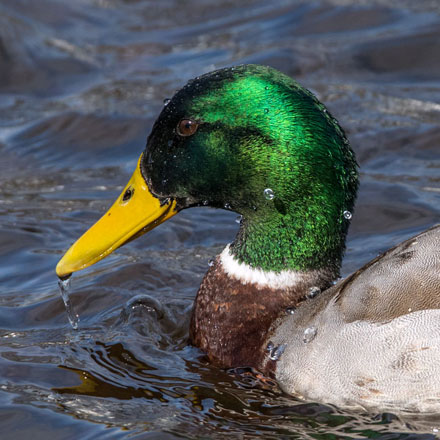 |
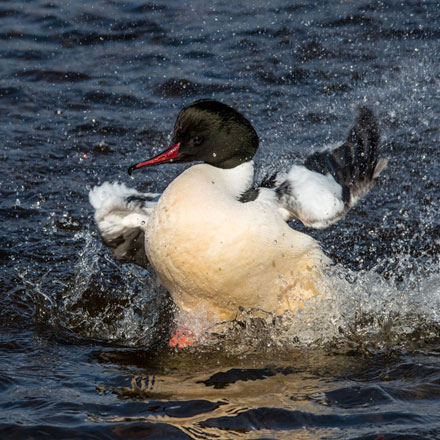 |
| Canada Goose |
Female Goosander |
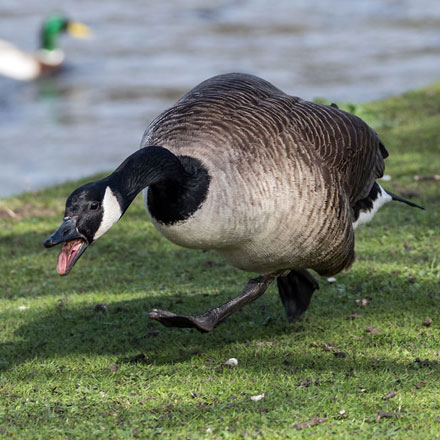 |
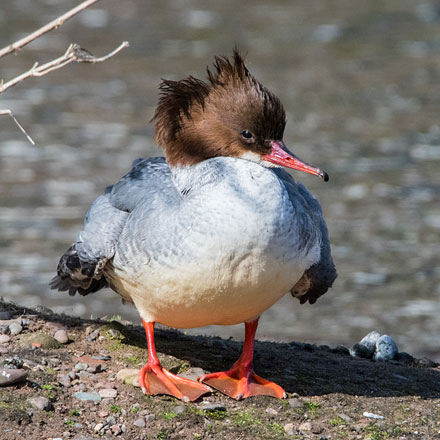 |
| Carrion Crow |
Teal |
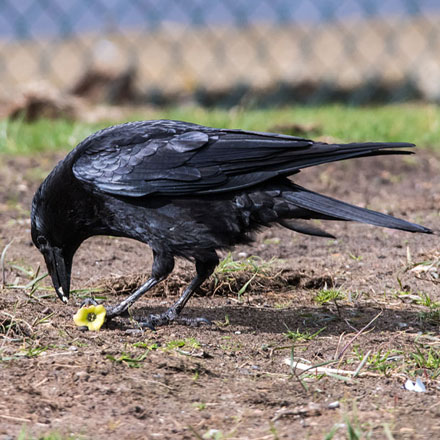 |
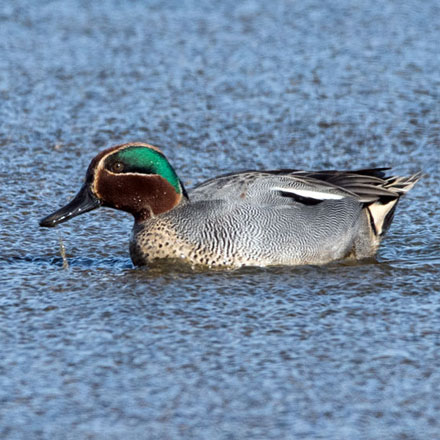 |
17th March 2019:
Stevenson, Saltcoats and Irvine Harbour
It was “business as usual” on Sunday. I was fit enough to
drive and the weather was to brighten from the west, so after picking
up John for the first time in nearly a month, we headed for the North
Ayrshire coast. Things were going well until just before we reached the
M77 when a low tyre pressure warning came up on my dashboard. We had to
replace the offending wheel with the spare before we could continue the
journey. However off we went onto the coast, specifically,
Stevenson Morrisons for you know what - yes, our first Sunday breakfast
in nearly a month. Appropriately enough it was a great breakfast that
was very difficult to mark down so we gave it 10/10. A short drive then
took us to Stevenson point. Sadly there wasn’t much to see there,
only a Cormorant on the rocks and some Oystercatchers on the short
grass. I quickly decided to move on to Saltcoats Harbour where we were
immediately greeted by a wee Rock Pipit on the sea wall. The tide was
going out and we could see a Dunlin picking its way through the exposed
seaweed.
| Cormorant |
Oystercatcher |
Rock Pipit |
Dunlin |
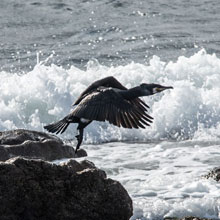 |
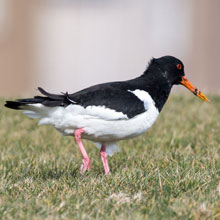 |
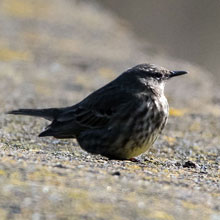 |
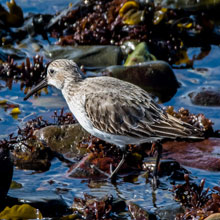 |
At first unseen because of their camouflage,Turnstones became
visible as they too moved across the weed, searching for insects,
crustaceans and molluscs. Close by, a first winter Herring Gull was
dabbling in shallow water, but not catching much. We walked out along
the harbour and John spied a pair of Eider.
The drake, resplendent in his fine black and cream plumage, was trailing
behind the female who might just have been trying to outrun him.
| Turnstone |
1st Cycle Herring Gull |
Drake Eider |
Female Eider |
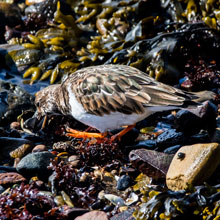 |
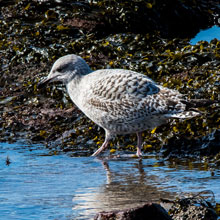 |
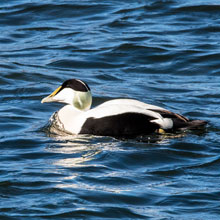 |
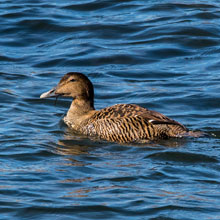 |
The view over to Arran was very impressive. A CalMac ferry (also see below) was making its way across the Clyde Estuary toward
Brodick nestled below the snow-covered slopes of Goat Fell.
Around the harbour, the wind was quite blustery. We saw only a few
diving Shag, some Feral Pigeons on the walls and a couple of Redshanks
in exposed rocks. We looked in vain for Purple Sandpipers ,
as we had seen them there over the years. They only winter in the UK
before moving to breed in Iceland and Scandinavia, so perhaps they had
already moved there.
|
Shag |
Feral Pigeon |
Redshank |
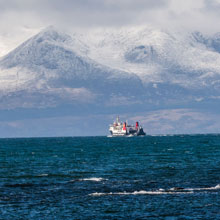 |
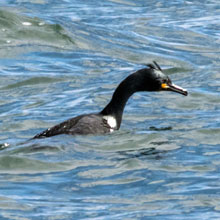 |
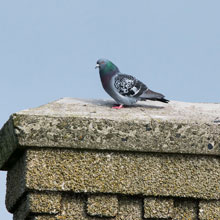 |
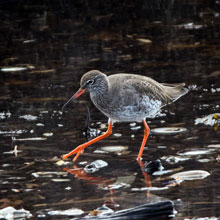 |
We next walked around to the north side of the harbour. Unfortunately
the skies became overcast, but I carried on photographing nonetheless.
The paddling pool was busy with the usual suspects, amongst which were
various ages of Herring Gulls and Black-headed Gulls. I stalked a wee
Rock Pipit as it galloped along the edge of a flower bed. I also snapped
some bonny Starlings as they poked around in the seaweed (also see
“Pictures of the Week”, below).
| Herring Gull |
Rock Pipit |
Starling |
Black - headed Gull |
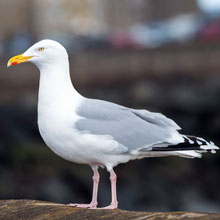 |
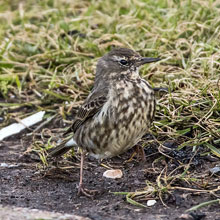 |
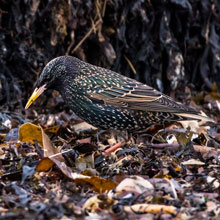 |
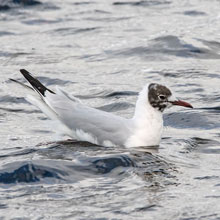 |
A 2nd winter Herring Gull caught my eye (also see “Pictures of
the Week”, below). A large Great Black-backed Gull glided
threateningly over the pool, but the smaller gulls were having none of
it, as they chased it from the area. The main occupants of the pool
were a couple of dozen Mute Swans. Occasionally some passers by stopped
to feed them bread - much to the excitement of the Gulls. I caught a
fleeting shot of a male Pied Wagtail - our final shot at Saltcoats, as we
decided to moved south to Irvine Harbour.
| 2nd Cycle Herring Gull |
Great Black - backed Gull |
Mute Swan |
Pied Wagtail |
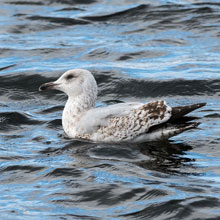 |
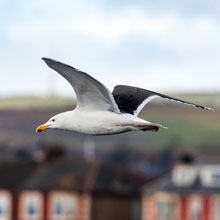 |
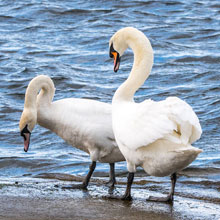 |
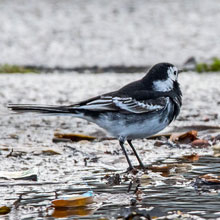 |
We arrived at Irvine Harbour just as the sun broke through the clouds. Immediately I saw a few Grey Seals about
200m on the River Garnock just before it joins the River Irvine. The
photo is not clear (due to the distance) but I think there may be a
Seal pup on the rightmost Seal. A bit closer to the car park John
spotted a flock of Wigeon just where the two rivers meet. They took off
and flew overhead (to my shame, I missed that photo-opportunity due to
my monopod setup). We followed the estuary past the Bridge of Scottish Invention that leads to the unused Big Idea Science Exhibition Centre .
Below the bridge a pair of Eider were paddling upstream. The drake gave
a wee flap of his wings to show the female he was well up for it.
| Grey Seal |
Wigeon |
Drake Eider |
Female Eider |
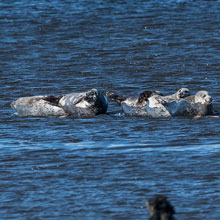 |
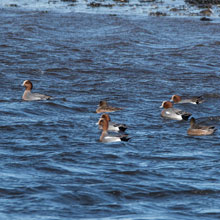 |
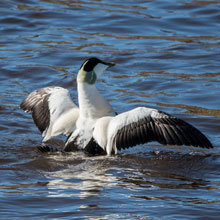 |
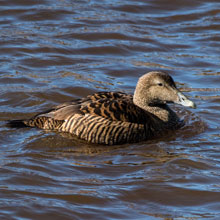 |
A bit further downstream a fine-looking Carrion Crow was foraging on a
straw-strewn riverbank. On the quay above the Crow a pair of adult
Herring Gulls were basking in the sun (also see “Pictures of the
Week”, below). On the opposite bank a lone Curlew was working its
way along the water’s edge. It seemed to be aware we were looking
at it as it scurried behind a rock and out of sight. We continued out
onto the viewpoint at the mouth of the river from where I took a
panorama shot looking back upstream (see below). On our way back to the
car I heard the familiar sound of a huge Goose flock, although when I
looked ahead all I could see were a sizeable gathering of Gulsl above
some feeders. As we walked on further though I did see the flock of what
I think were Greylags - around at least a couple of hundred rising
above the Bogside Flats SSSI.
| Carrion Crow |
Herring Gull |
Curlew |
Greylag Goose |
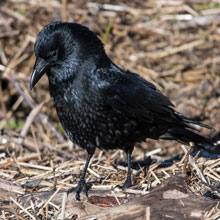 |
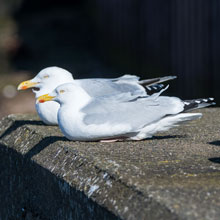 |
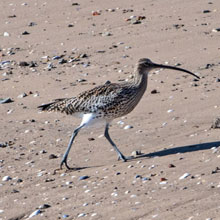 |
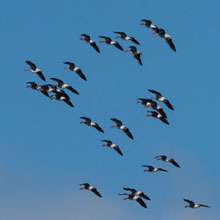 |
Below is the view East from the viewpoint at the mouth of the Irvine/Garnock Estuary. Notice, on the right the
former Harbour Pilot House .
We ended the visit in our usual way by consuming delicious chocolate
eclairs and tea. It had been an enjoyable few hours, mostly in sunny
weather and although there were few surprises I managed to accumulate
an engaging set of photographs. After a four-week period of
recuperation I am pleased with that accomplishment and I look forward
to the next trip.
Pictures of the Week:
| Herring Gull |
2nd Cycle Herring Gull |
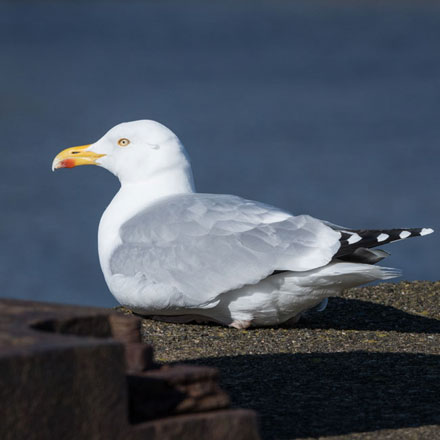 |
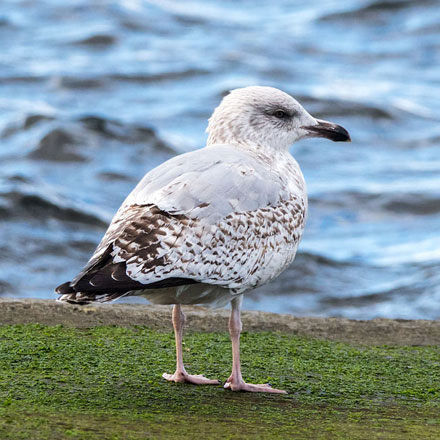 |
| Carrion Crow |
Starling |
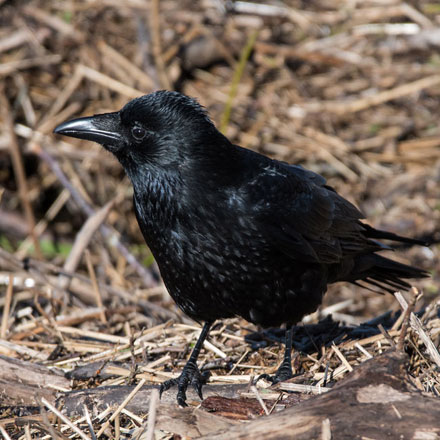 |
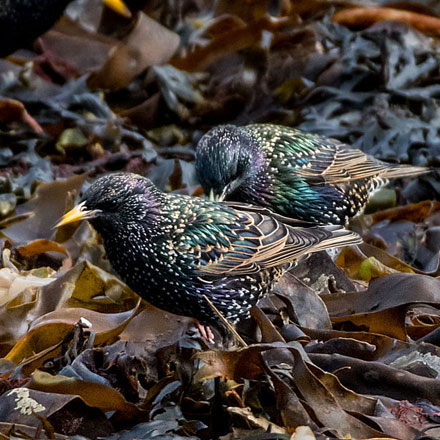 |
10th March 2019:
Hogganfield Loch, Glasgow
With my mobility still being somewhat curtailed by an injured arm I was
limited to a quick Saturday visit to a sunny Hogganfield Loch LNR
in the east end of Glasgow. My first capture was of a line of
Black-headed Gulls awaiting the next person carrying a plastic bag,
when they will form an noisy aerial mob as each bird competes for each
morsel of bread. I’m sure though that those kind people are
frustrated that the persistent aerial raids of the Gulls always manage
to steal much of the bread intended for the more popular Swans.
On the water, a Moorhen was checking out the skies, for what I don’t know. A couple of quarrelsome drake Goldeneyes
were diving for food. Their diet includes insects, crustaceans,
molluscs and fish eggs and aquatic plants. A large Coot was preening on
the water’s edge. Not far away on the bank a large patch of
Coltsfoot was blooming in the winter sunshine.
| Moorhen |
Goldeneye |
Coot |
Coltsfoot |
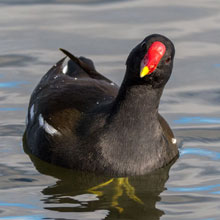 |
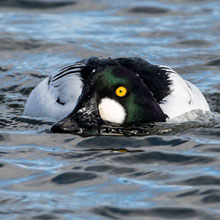 |
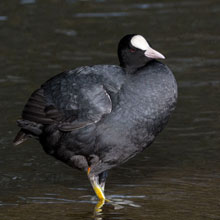 |
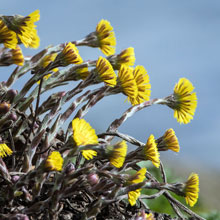 |
The water birds were brilliantly illuminated by the fine Winter
sunshine, providing ideal conditions for photography. I took portraits
of some Swans to highlight the obvious differences
between Mute and Whoopers. My eye was then caught by an unusual feral
pigeon. It is interesting to realise that these birds are descended
from the Rock Dove that was effectively domesticated
as Neolithic man turned to agriculture around 10,000 years ago. A
big Tufted Duck cruised past before vanishing beneath the water,
re-emerging seconds later with a slight damper-looking tuft (see
“Pictures of the Week”, below).
| Whooper Swan |
Mute Swan |
Feral Pigeon |
Tufted Duck |
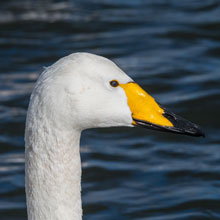 |
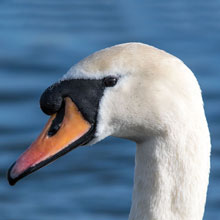 |
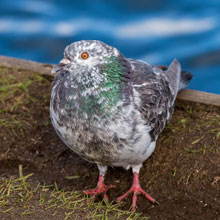 |
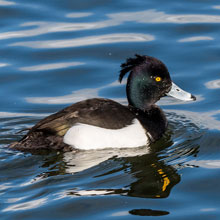 |
There was a significant number of Lesser Black-backed Gulls
on the Loch. The adults have a dark grey back and yellow legs. The
immature birds are a bit more difficult to identify. The one shown below
is entering its second year where the first bits of adult plumage starts
to show, and the 1st year black beak becomes more yellow. Feeders
emerged from their car as I was photographing the gulls. As mentioned
above, the birds respond to the mere sight of a plastic bag by crowding
the shore awaiting what is usually bread (although too much bread
is not good for them). At the front of the resulting feeding melee were
the Swans, Whoopers as well as Mutes, packed tightly against bank,
their eyes tightly focused on the plastic bags.
| Lesser Black - backed Gull |
1st Cycle Lesser Black - backed Gull |
Mute Swan |
Whooper Swan |
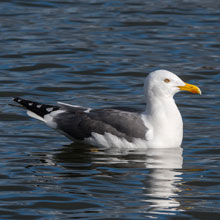 |
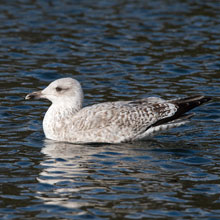 |
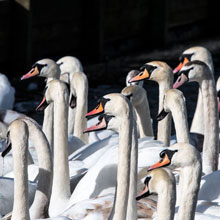 |
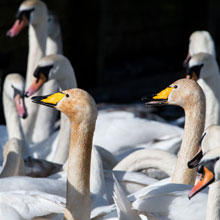 |
Unusually, a large Grey Heron
flew fairly close to the car park, chased by some Carrion Crows. There
is a Heronry on the woods at the east end of the island. They are
mainly carnivorous and will take small birds, so the Crows were
probably defending their territory as they too nest in those trees. I
continued my exploitation of the feeding photo-opportunity by snapping
some Black-headed Gulls
in flight (also see “Pictures of the Week”, below), of which
there were many! When the bread supplies were finished there was still
some flapping of wings as Mute Swans arrived too late for their lunch
and for others, there was preening to be done.
I next set off on a quick circuit of the Loch and soon spotted a Cormorant
in its breeding plumage perched in the middle of the Loch. It was
defending its position from marauding Gulls who fancied the perch for
themselves. Roosting behind one of the many artificial islands anchored
in many parts of the Loch, I spotted a pair of roosting Great Crested Grebes .
Hogganfield is a great place to study these Grebes as there are usually
at least a couple of pairs that breed successfully - so I’m
already looking forward to photographing their offspring. The chirps of
a pair of Pied Wagtails then drew my attention. They were scouring the
water’s edge seeking invertebrates. The male seemed to be calling
the shots as every so often it would take flight with a flourish of
chirps to be followed almost immediately by the female.
As I snapped the Wagtails, a handsome Lesser Black-backed Gull
descended onto the Loch (also see “Pictures of the Week”,
below). It added to the flock already numbering in the dozens. Just what
they were up to I’m not sure. Perhaps they were new arrivals.
When I reached the East side of the island I was surprised to see even
more Mute Swans in the lee side of the island, most of them preening
contentedly on the artificial islands.
| Lesser Black - backed Gull |
Mute Swan |
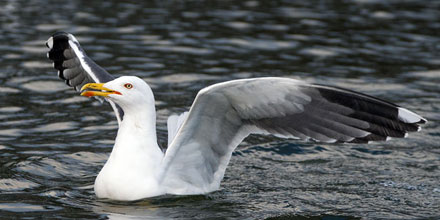 |
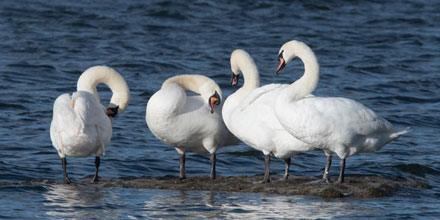 |
A Lesser Black-backed Gull was making a lot of noise after a short
disagreement with a juvenile. I then spotted, 50 mts. beyond the island,
another pair of Great Crested Grebes. They were trying to get on with
their fascinating mating ritual, only to be interrupted, annoyingly, by
a noisy bin lorry circulating the park paths. My next capture was of a Blue Tit
that was busy foraging in path-side trees for insects on the branches
above the heads of scores of unsuspecting walkers. Another sign of the
imminent arrival of Spring was the heart-warming sight of hordes of
Daffodils in bloom.
| Lesser Black - backed Gull |
Great Crested Grebe |
Blue Tit |
Daffodil |
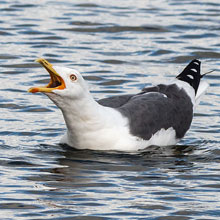 |
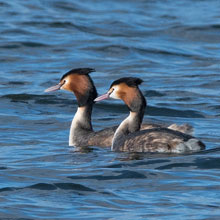 |
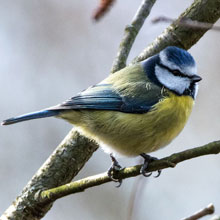 |
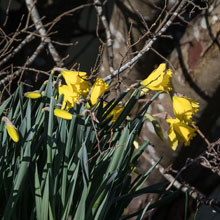 |
As I rounded the path to the North side of the Loch, one of the Great
Crested Grebes unexpectedly appeared from under the surface only 10m
away (see “Pictures of the Week”, below). With my car in
sight I was pleased to see a pair of Greylags loitering close to the
bank, pleased as I had seen them earlier when the light was not quite
so good. A demure female Mallard looked at me, checking for food, but I
was rather more interested in a beautiful pair of Goosanders. They too
were in fine breeding plumage, ready for the emergence of Spring.
| Greylag Goose |
Female Mallard |
Female Goosander |
Drake Goosander |
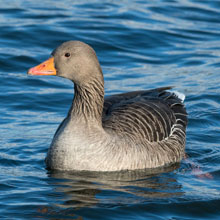 |
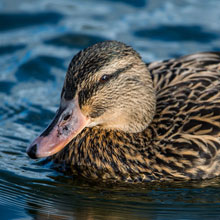 |
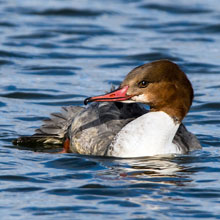 |
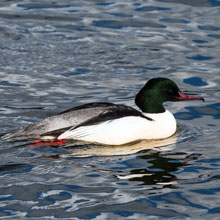 |
My visit had only lasted an hour but in that time I had taken a
pleasing number of nice shots. Hogganfield is an unusual Local Nature
Reserve (LNR) as it is in every other way just a very well used public
park. That the birds and people manage to successfully cohabit the Park
is good to see and a tribute to the efforts of Glasgow City Council.
Pictures of the Week:
| Black - headed Gull |
Tufted Duck |
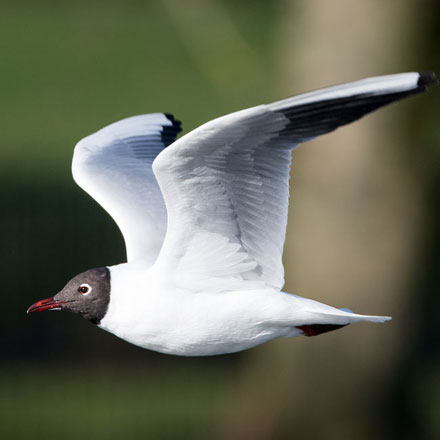 |
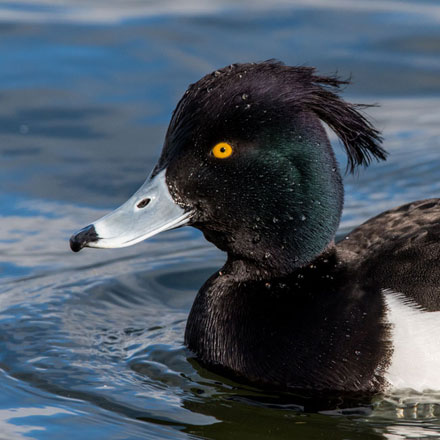 |
| Lesser Black - backed Gull |
Great Crested Grebe |
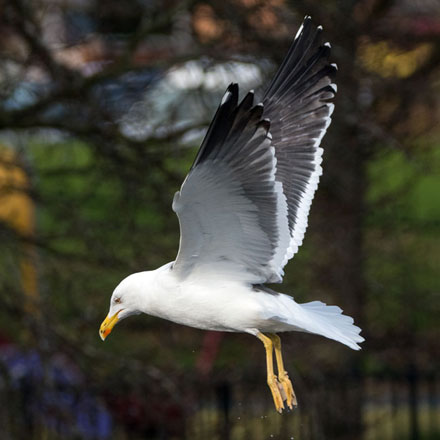 |
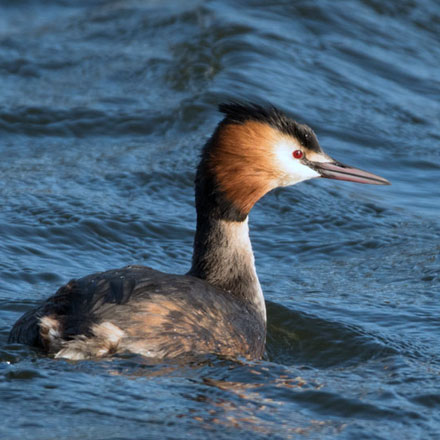 |
3rd March 2019:
RSPB Baron’s Haugh (Map) and Dalzell Estate, (Map) Motherwell
I ventured out on my own on Sunday on a short visit to RSPB Baron’s Haugh, (Website)
Motherwell, my local nature reserve, to see if my injured arm was up to
it. The weather was sunny but a bit cold. So well-wrapped and camera
and monopod at the ready I plodded out of the car park and delved
firstly into the neighbouring Dalzell Estate ( Website) min search of nice pictures. As I passed along wooded paths I could hear shuffling in the branches above my head. It was a pair of Grey Squirrels searching for food. These cute creatures are much-maligned in certain quarters, rightly or wrongly, but they photograph well (see
also ,”Pictures of the Week”, below). The woods of the
Estate are often filled with a rich variety of bird life but I was
struggling to find them. The ripening cones of a huge Cypress tree
caught my eye as did the Old Man’s Beard Lichen (Usnea)
draped on the young Silver Birch trees. Eventually I came upon a little
Blue Tit busily searching for food on the twigs and branches.
| Grey Squirrel |
Cone |
Usnea Lichen |
Blue Tit |
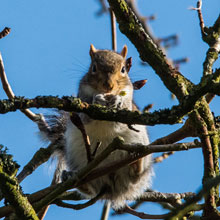 |
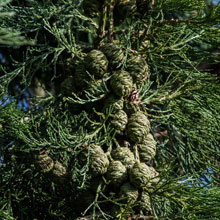 |
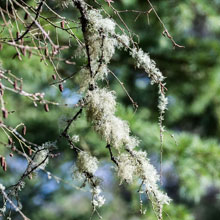 |
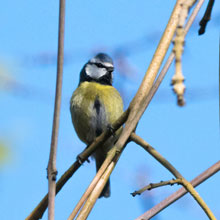 |
In an area close to Dalzell House
I came across, Wordsworth-like, a host of golden daffodils, and
Crocuses. They weren’t wild of course, but they were
lovely. Still struggling to spot any birds I was delighted when a
few Jackdaws passed overhead and then I snapped a wee Coal Tit amongst the coppices. (see also ,”Pictures of the Week”, below).
| Daffodil |
Crocus |
Jackdaw |
Coal Tit |
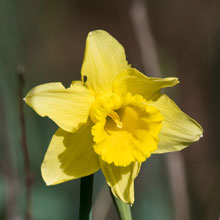 |
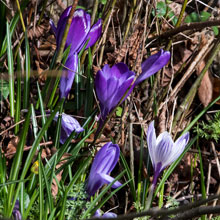 |
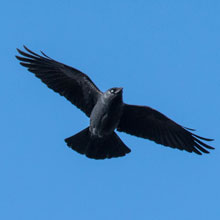 |
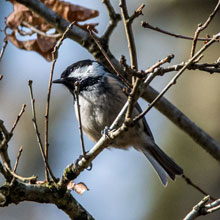 |
I last visited the Dalzell Estate on a Thursday morning a month ago and
managed to see Nuthatches, Great Spotted Woodpecker and Song and
Mistle Thrushes. I wasn’t so lucky on Sunday. The weather was
similar but perhaps the increased number of weekend walkers (and their
dogs) had made the birds pull back.
| Nuthatch |
Great Spotted Woodpecker |
Song Thrush |
Mistle Thrush |
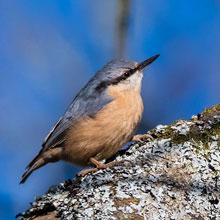 |
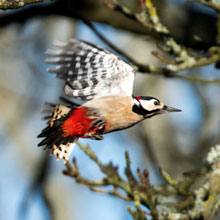 |
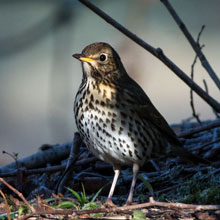 |
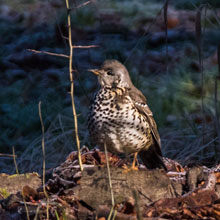 |
I next left the Estate into the RSPB Baron’s Haugh Reserve and passed along the Chestnut Walk (see map)
to the River Clyde. Looking south I saw some Goosanders about 100m
upstream. I walked north scanning the river as I walked, as I’d
been tipped off that there were geese on the opposite bank. Sure enough
I located about 20 Canada Geese and a pair of Greylag Geese. Close by I
also snapped a pair of Mute Swans at the near bank. Annoyingly, these
pictures were all taken “contre-jour”, as the sun was
shining directly behind the birds.
| Goosander |
Canada Goose |
Greylag Goose |
Mute Swan |
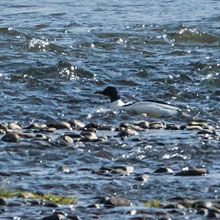 |
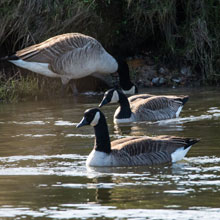 |
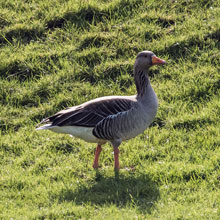 |
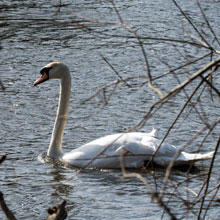 |
As I walked I came across the first, of what will be many, sightings of a flower that heralds the arrival of Spring, a Lesser Celandine . It was a favourite flower of the Victorian Lakeland poet, William Wordsworth, who wrote several poems
expressing his admiration of the pretty yellow flowers. Another yellow
bloom that has been ever-present, even throughout the Winter, has been
the Gorse flower of which there are many lining the paths of the
reserve. I was also delighted to see quite a few tiny Barren Strawberry flowers below the west-facing bushes. The final flower I saw by the Clyde was an early-flowering Dandelion. Another sign of a very mild winter.
| Lesser Celandine |
Gorse |
Barren Strawberry |
Dandelion |
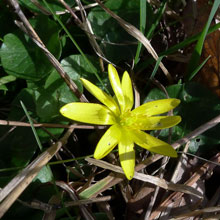 |
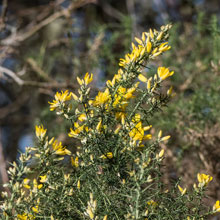 |
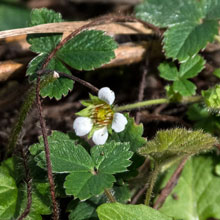 |
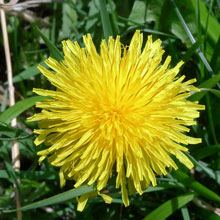 |
Eventually I reached the Centenary Hide from which I got a lovely
sunlit view of a flock of around a dozen Curlews about 100m out from the
hide.
I also noticed a Lesser Black-backed Gull, with its charcoal grey back
and yellow legs. after a quick rest I next headed further round the
course of the river to the Phoenix Hide. I paused briefly at a bench by
a bend in the river to observe a pair of Buzzards doing aerobatics,
probably part of a courtship display. On a shingle bank on the river a
few Mallards were resting just opposite the Phoenix Hide ( so-named,
apparently, since it rose from the ashes of the original wood-built
hide that was torched by vandals). Just below the hide I could see a
pair of Little Grebes diving for small fish. These are also known as Dabchicks (see also ,”Pictures of the Week”, below).
| Lesser Black - backed Gull |
Common Buzzard |
Mallard |
Little Grebe |
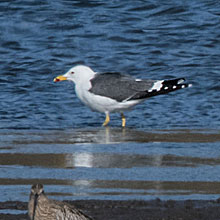 |
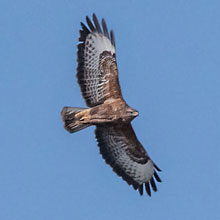 |
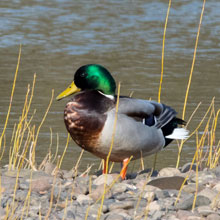 |
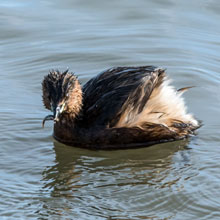 |
Near the Dabchicks, a Coot was chewing on pondweed, but little else was
showing around the hide. I could see across the Haugh to the Causeway
Hide. There were birds on the water around that hide, so I walked round
to check them out. On the way, some Carrion Crows were perching high on
trees that line the fields east of the Haugh. As I arrived they had been
scouring the field for invertebrates and they moved back down off the
trees when I’d passed. From the Causeway Hide I took some
pictures of some feeding Teal. I also photographed a solitary Herring
Gull that had been making a fuss about something or other.
| Common Coot |
Carrion Crow |
Teal |
Herring Gull |
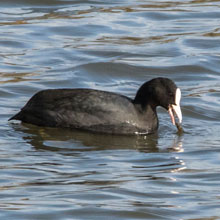 |
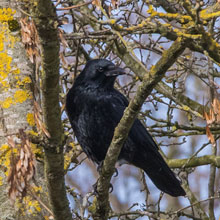 |
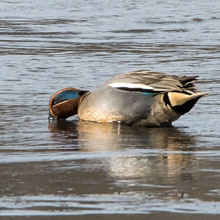 |
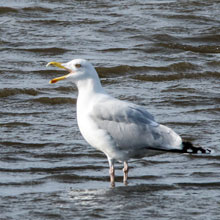 |
I soon moved to the Marsh Hide but was disappointed to find it devoid of birds. I did though capture some nice shots of Reed Mace and Goat Willow catkins .
I finally trudged up the hill back to the car park. My last captures of
the visit were of a Magpie in flight over a field and of a Robin singing
on a shadowy hedgerow at the entrance to the car park.
| Reed Mace |
Goat Willow catkins |
Magpie |
Robin |
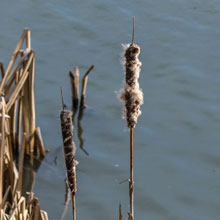 |
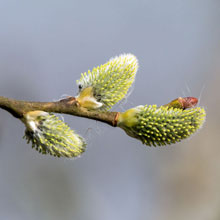 |
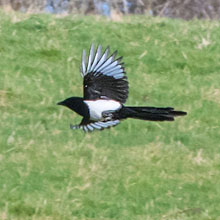 |
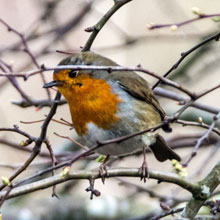 |
A view of Baron’s Haugh, looking west:
I think you can see from the pictures I’ve gathered that my
injury has not held me back too much. So I’m looking forward to
next weekend, although the weather prediction doesn’t make nice
reading.
Pictures of the Week:
| Grey Squirrel |
Jackdaw |
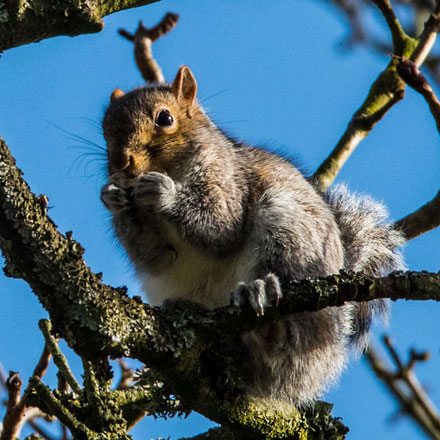 |
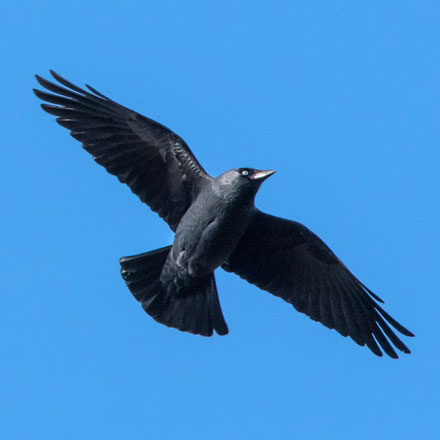 |
| Little Grebe |
Daffodil |
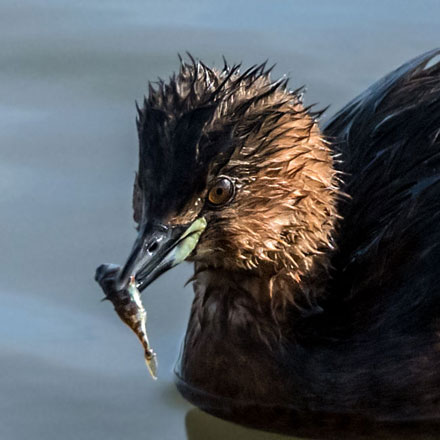 |
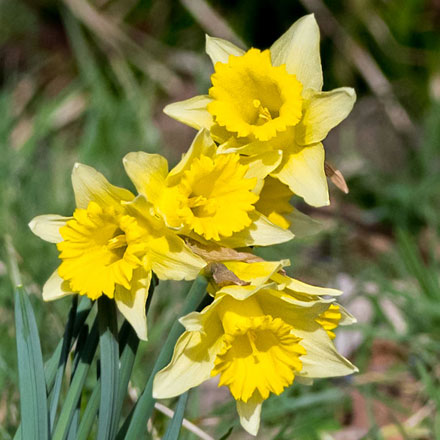 |
Back To Top
|

